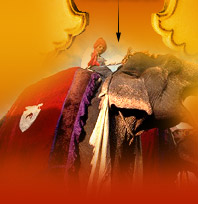 |
Kashmir Travel Tours Guide Offers : - Online kashmir india holiday vacations tourism, kashmir travel guide, city guide kashmir, kashmir hill station package tours, kashmir india travel tourism, tours to kashmir india, kashmir tourist destinations guide india and also offers online package tour bookings to kashmir and many more....... |
 |
 |
|
 |
|
 |
Kashmir
is like a jewelled crown set on the map of India, Kashmir is a many
faceteddiamond, changing character with the seasons - always
extravagantly beautiful.Three Himalayan ranges, Karakoram, Zanaskar and
Pir Panjal - snow capped,majestic, frame the landscape from northwest to
northeast.  They are the birthplace of great rivers which flow through the kashmir valley.RajTaringini the chronology of the Kashmir Kings written by Kalhana eulogises the beauty of Kashmir as follows:"Kasmira Parvati Paroksh; Tat Swami ch Maheswara". Meaning Kashmir is as beautiful as Goddess Parvati manifest; and its owner is Lord Shiva Himself" And the Mughal Emperor exclaimed "Gar Bar-ru-e-Zamin Ast ; Hamin Ast ,Hamin Ast Hamin Asto. Meaning if there is paradise on this earth : This is it, this is it, this is it. Srinagar with is appealing surroundings is rightly called the Pride of the Kashmir Valley. The Mughal emperor Jahangir was so captivated by the beauty of this valley that he exclaimed "Gar firdaus, ruhe zamin ast, hamin asto, hamin asto, hamin asto" (If there is a heaven on earth, it's here, it's here, it's here). According to a legend which is even in Rajatarangini and Nilmat Purana Kashmir was once a large lake. Kashyap Rishi had drained off the water making it an abode. Emperor Ashok introduced Buddhism to kashmir in the 3rd century BC which was later strengthened by Kanishka. Huns got the control of the valley in the early 6th century. The valley regained freedom in 530AD but soon came under the rule of the Ujjain empire. After the decline of the Vikramaditya the valley had its own rulers. Lalitaditya ( 697- 738 AD ) was most famous Hindu ruler who extended his kingdom up to Bengal in the east, Konkan in the south & Turkistan in the north. Islam came into kashmir in the 13th & 14th centuries. Zain-ul-Abedin (1420 - 70 AD ) was the most famous ruler who came to kashmir when the Hindu king Sinha Dev reigned there before Tatar invasion. Later Charaks Haider Shah, son of Zain-ul-Abedin, continued to rule till 1596 AD when Akbar conquered kashmir. In 1752 AD, kashmir passed on from the feeble control of the Mughal emperor of the time to Ahmed Shah Abdali of Afghanistan. The valley was ruled by the Pathans for 67 years. Attractions
|
|||
|
Copyright © Golden Triangle Tours India. All Rights Reserved. Site Designed & Maintained by Sai Info Soft |